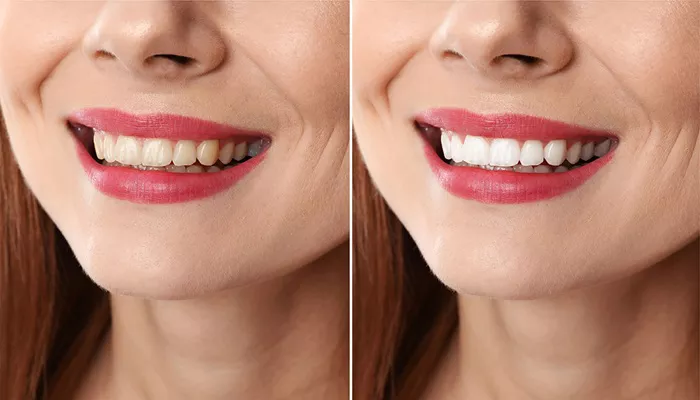Teeth whitening has become a popular cosmetic procedure, with numerous options available to achieve a brighter smile.
Among these, Zoom Whitening stands out due to its effectiveness and convenience. However, as with any cosmetic treatment, concerns about its safety and impact on oral health arise. This article explores whether Zoom Whitening is bad for your teeth, examining the procedure, its effects, potential risks, and considerations for maintaining oral health.
What Is Zoom Whitening?
Zoom Whitening is a professional teeth whitening system offered by dentists. It utilizes a hydrogen peroxide-based gel and a special light to accelerate the whitening process. The treatment typically takes about an hour and involves three 15-minute applications of the whitening gel, each activated by the Zoom light.
The procedure begins with a thorough cleaning and preparation of the teeth. A protective gel is applied to the gums to shield them from the bleaching agent, followed by the application of the Zoom Whitening gel. The light is then used to enhance the gel’s effectiveness, breaking down stains and discoloration on the teeth.
How Zoom Whitening Works
The active ingredient in Zoom Whitening is hydrogen peroxide, a bleaching agent that breaks down into water and oxygen when applied to the teeth. The Zoom light enhances this process by increasing the temperature of the gel, which speeds up the oxidation reaction that removes stains. This method allows for more effective whitening compared to over-the-counter products.
Benefits of Zoom Whitening
Quick Results: One of the main advantages of Zoom Whitening is the speed at which it delivers results. Patients often see a significant improvement in tooth color after just one treatment.
Effective Stain Removal: Zoom Whitening can address a variety of stains, including those from coffee, tea, red wine, and tobacco. It is particularly effective for deep-set stains that are difficult to remove with at-home treatments.
Professional Supervision: Since Zoom Whitening is performed by a dentist, it ensures a higher level of safety and effectiveness compared to DIY whitening kits.
Potential Risks And Side Effects
While Zoom Whitening is generally safe when performed by a professional, it is essential to be aware of potential risks and side effects:
Tooth Sensitivity: One of the most common side effects of teeth whitening, including Zoom Whitening, is increased tooth sensitivity. This occurs because the whitening agents can temporarily affect the tooth enamel and nerves. Sensitivity usually subsides within a few days after treatment, but it can be uncomfortable for some individuals.
Gum Irritation: The whitening gel can sometimes cause irritation to the gums if it comes into contact with them. The protective gel applied during the procedure helps minimize this risk, but it is still possible to experience mild gum discomfort.
Uneven Whitening: In some cases, whitening treatments can lead to uneven results, especially if there are existing dental issues or if the patient has dental restorations like crowns or veneers. These materials do not respond to whitening agents in the same way as natural teeth.
Enamel Damage: There is a potential risk of enamel damage with any whitening procedure. The acids and bleaching agents used in Zoom Whitening can weaken the enamel if not properly managed. However, this risk is minimal when the procedure is performed correctly and under professional supervision.
Is Zoom Whitening Bad for Your Teeth?
When considering whether Zoom Whitening is bad for your teeth, it is essential to weigh the risks against the benefits. For most patients, Zoom Whitening is a safe and effective way to enhance their smile. However, certain factors may influence how the procedure affects your oral health:
Pre-existing Dental Conditions: Individuals with sensitive teeth, gum disease, or other dental issues should consult their dentist before undergoing Zoom Whitening. These conditions can increase the risk of side effects and may require additional precautions.
Proper Use and Maintenance: Following your dentist’s instructions for post-treatment care is crucial for minimizing risks.
This includes avoiding foods and drinks that can stain the teeth and maintaining good oral hygiene.
Frequency of Treatment: Frequent whitening treatments can contribute to enamel erosion and increased sensitivity. It is essential to use whitening treatments in moderation and follow your dentist’s recommendations.
Alternatives to Zoom Whitening
For those concerned about the potential risks of Zoom Whitening, there are alternative whitening options available:
At-Home Whitening Kits: Over-the-counter whitening products, such as whitening strips and gels, can be less intense than professional treatments. While they may not deliver the same immediate results as Zoom Whitening, they can be a gentler option for some individuals.
Whitening Toothpaste: Whitening toothpaste contains mild abrasives and chemicals that help remove surface stains.
Although it does not provide the same dramatic results as professional treatments, it can be a good option for maintaining a bright smile.
Natural Remedies: Some people turn to natural remedies for teeth whitening, such as baking soda or activated charcoal.
While these methods may have limited effectiveness, they can be a gentler alternative to more aggressive whitening treatments.
Conclusion
Zoom Whitening is a popular and effective teeth whitening treatment that offers quick and noticeable results. While it is generally safe when performed by a professional, it is essential to be aware of potential side effects, such as tooth sensitivity and gum irritation. By following your dentist’s instructions and considering any pre-existing dental conditions, you can minimize risks and achieve a brighter smile with Zoom Whitening. If you have concerns about the procedure, consult with your dentist to determine the best whitening option for your oral health needs.

